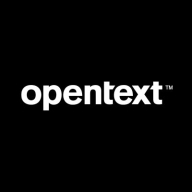

OpenText AI Operations Management and Azure Monitor are two leading operation management systems competing in the IT operations management space. Azure Monitor holds the upper hand with its robust feature set, including seamless scaling and extensive integration capabilities, which are highly rated by users.
Features: OpenText AI Operations Management provides extensive event correlation and consolidated dashboards, improving automation and transparency. It excels in integrating data globally across networks and applications. Azure Monitor offers comprehensive cloud resource monitoring, powerful alert functions, and real-time insights, with seamless integration with Azure DevOps, providing a highly intuitive experience.
Room for Improvement: OpenText AI Operations Management needs lower setup complexity, better scalability, improved visualization, and enhanced AI integrations, as its deployment process can be cumbersome. Azure Monitor's challenges include high data storage costs, lack of certain AI-driven insights to pre-empt issues, and limited multi-cloud support.
Ease of Deployment and Customer Service: OpenText AI Operations Management is efficient in on-premises and hybrid cloud environments but has complex deployment. Customer service experiences vary from excellent support to slow response times. Azure Monitor benefits from Microsoft's cloud ecosystem and generally helpful technical support, although setup challenges exist for unfamiliar users.
Pricing and ROI: OpenText AI Operations Management is considered expensive, posing a challenge for smaller companies, yet offers ROI through automation. Azure Monitor uses a flexible pay-as-you-go pricing model; while potentially costly with extensive data use, it often provides favorable ROI due to seamless Azure integration, reducing administrative burdens.
Azure Monitor helps prevent impacts on their system.
However, the second-line support is good.
Users end up getting no resolution from their team because they're outsourced vendors, and they don't have deeper expertise over any of the products they are referring to.
I would rate the support for Azure Monitor as a seven.
OpenText goes out to bring the right people to answer any inquiries I have.
My team works with the customer success team for technical support and customer service for OpenText AI Operations Management.
With APM, you can go heavy or you can go light. It just depends on what you want, what your use case is, and how reactive you want to be to system load or resilient to failure.
Azure Monitor is very scalable; there are no issues with scalability for different kinds of businesses.
The stability and scalability depend on architectural considerations and the company's specific situation.
Azure Monitor is working fine, yet I face a costing issue as if there are a lot of logs collected in the workspace or in the center, it becomes very costly.
We are following approximately 10,000 metrics and logs, and the platform performs pretty well.
If Azure Monitor can independently add one gigabyte, two gigabytes, or five gigabytes at least to log storage, I can fix the logs without syncing with Log Analytics Workspace and Sentinel.
The cost skyrockets once you start using it, and there are complaints that the actual cost of the Kubernetes cluster was less than the cost they were incurring for Azure Monitor.
The challenges with Azure Monitor are that it's initially complex to set up because you need multiple components.
Normally, predictive features can be more useful, but this is an end-to-end solution that needs to be customized.
Splunk is more business-friendly due to its prettier interface.
When I export logs into the application, workspace, log analytic workspace, and into Sentinel to read reports, I need to add storage, which increases the cost.
From a cost perspective, OpenText Operations Bridge is cost-effective as it saves us man hours.
The alerting features definitely help in reducing operational downtime for my customers by allowing us to get notifications in advance and take active actions.
I also appreciate the ability to measure feature activity, see what types of devices they are on, follow specific use cases, and measure the amount of traffic going to a particular application.
Resource monitoring is essential.
This integration ensures that when monitoring systems alert and subsequently resolve, tickets are automatically created and closed.
We have a platform where we are collecting metrics, logs, and traces for OpenText AI Operations Management, and if there is an anomaly, we directly open a ticket in our ITSM system.
| Product | Market Share (%) |
|---|---|
| Azure Monitor | 3.6% |
| OpenText AI Operations Management | 0.9% |
| Other | 95.5% |

| Company Size | Count |
|---|---|
| Small Business | 23 |
| Midsize Enterprise | 7 |
| Large Enterprise | 29 |
| Company Size | Count |
|---|---|
| Small Business | 10 |
| Midsize Enterprise | 7 |
| Large Enterprise | 35 |
Azure Monitor is a comprehensive monitoring solution offered by Microsoft Azure. It provides a centralized platform for monitoring the performance and health of various Azure resources, applications, and infrastructure.
With Azure Monitor, users can gain insights into the availability, performance, and usage of their applications and infrastructure. The key features of Azure Monitor include metrics, logs, alerts, and dashboards. Metrics allow users to collect and analyze performance data from various Azure resources, such as virtual machines, databases, and storage accounts.
Logs enable users to collect and analyze log data from different sources, including Azure resources, applications, and operating systems. Azure Monitor also provides a robust alerting mechanism that allows users to set up alerts based on specific conditions or thresholds. These alerts can be configured to notify users via email, SMS, or other notification channels. Additionally, Azure Monitor offers customizable dashboards that allow users to visualize and analyze their monitoring data in a personalized and intuitive manner.
Azure Monitor integrates seamlessly with other Azure services, such as Azure Automation and Azure Logic Apps, enabling users to automate actions based on monitoring data. It also supports integration with third-party monitoring tools and services, providing flexibility and extensibility.
Overall, Azure Monitor is a powerful and versatile monitoring solution that helps users gain deep insights into the performance and health of their Azure resources and applications. It offers a wide range of features and integrations, making it a comprehensive solution for monitoring and managing Azure environments.
OpenText AI Operations Management centralizes event correlation and monitoring across infrastructures, prioritizing scalability and automation for efficient alert management. It empowers organizations with transparency and insights essential for effective IT resource management in hybrid cloud environments.
OpenText AI Operations Management offers comprehensive solutions for event correlation, integration, and centralized alert management. With capabilities that streamline operations, this tool supports efficient IT management across AWS, GCP, and on-premises environments. Despite requiring improvements in performance and usability, its robust reporting and seamless monitoring provide valuable insights for root cause analysis. Users leverage this platform to integrate event data, automate incidents, and manage hybrid infrastructures effectively, making it a key component in enhancing service perspectives globally. Its heavy architecture and reliance on Java and Flash, coupled with complex licensing and pricing, necessitate attention to functionality and support areas.
What are the key features of OpenText AI Operations Management?OpenText AI Operations Management is widely implemented in industries requiring comprehensive monitoring capabilities. Organizations benefit from its ability to consolidate tools and manage events effectively across hybrid environments. The integration of incident automation and performance evaluation tools is particularly beneficial for those looking to enhance compliance support and reduce response times. Despite some challenges, the platform remains a valuable asset in managing complex IT environments and improving operational effectiveness.
We monitor all Cloud Monitoring Software reviews to prevent fraudulent reviews and keep review quality high. We do not post reviews by company employees or direct competitors. We validate each review for authenticity via cross-reference with LinkedIn, and personal follow-up with the reviewer when necessary.